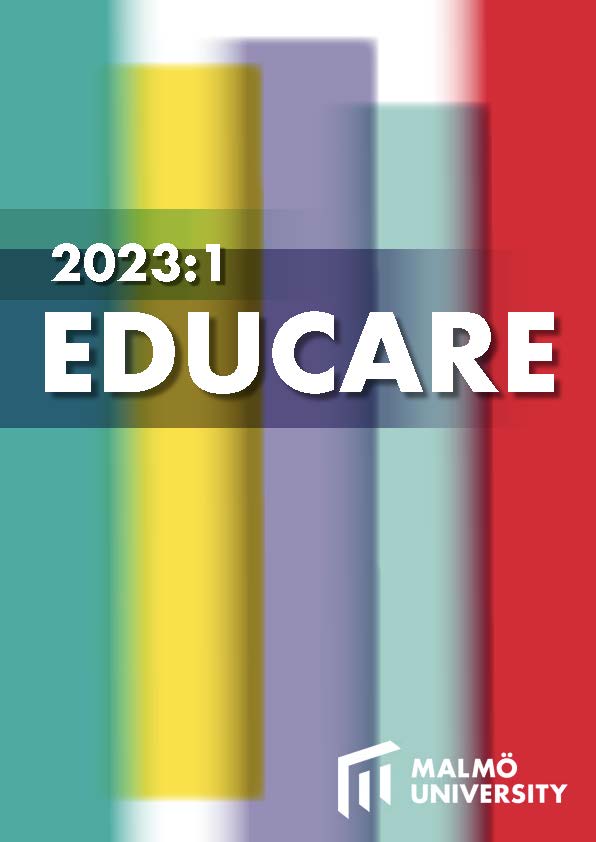Förstaårsstudenters akademiska skrivande och hur det kan utvecklas
DOI:
https://doi.org/10.24834/educare.2023.1.833Keywords:
akademiskt skrivande, studenters skrivutveckling, pedagogiska implikationer, textanalys, ämneslitteracitetAbstract
A major challenge for first-year students is the demands on academic writing. The purpose of the study is to identify students' difficulties with writing at the beginning of their education to thereby contribute to the discussion about how students' writing development can be supported. The overall theoretical perspective is systemic functional linguistics (SFL). The data consists of texts from the first examination of a primary teacher program. The analysis includes partly a corpus analysis of 125 texts concerning sentence length, word length, the proportion of long words, word variation, and lexical profile, and partly a qualitative text analysis of a selection of 11 students' texts from the larger group. The results indicate that the task design is of great importance for how advanced the students' texts are, based on the proportion of long words, word variation, and lexical profile. Furthermore, students struggle with paragraph division and creating clear relationships between and within paragraphs to create coherent texts. The results also show that the students need support to develop their ability to write from sources. Based on the results, the authors discuss how subject teachers in higher education can support students' writing development.
References
Ask, S. (2007). Vägar till ett akademiskt skriftspråk. Diss. Växjö: Växjö universitet.
Basturkmen, H. & von Randow, J. (2014). Guiding the reader (or not) to re-create coherence: Observations on postgraduate student writing in an academic argumentative writing task. Journal of English for Academic Purposes, 16, 14˗24. doi.org/10.1016/j.jeap.2014.07.005
Bergman L. & Olsson Jers, C (2014). Vilken väg tar den kritiska granskningen? Studenter i samtal om en vetenskaplig artikel. Högre utbildning, 4(1), 35˗47.
Bergman, L. (2016). Supporting Academic literacies. University Teachers in Collaboration for Change. Teaching in Higher Education, 21(5), 516˗31. doi:10.1080/13562517.2016.1160220
Bergman, L. (2020). Från sårbar till hållbar skrivutveckling i högre utbildning. I Bruce, B (Red.) Från sårbarhet till hållbarhet i lärande och undervisning. Lund: Studentlitteratur.
Bergman, l.. & Wennås Brante E. (2022). ”Vad är det som gäller här?”. Förstaårsstudenters möten med akademiens literacypraktiker. I A. Jakobsson, P. Nygård Larsson & L. Bergman (Red.), Ämneslitteracitet och inkluderande undervisning (303-332). Lund: Studentlitteratur AB.
Björnson, C. H. (1968). Läsbarhet. Stockholm: Liber.
Shanahan, T. & Shanahan, C. (2012). What Is Disciplinary Literacy and Why Does It Matter? Topics in Language Disorders, 32(1), 7-18. doi: 10.1097/TLD.0b013e318244557a
Cooney, A., Darcy, E. & Casey, D. (2018). Integrating reading and writing: supporting students' writing from source, Journal of University Teaching & Learning Practice, 15(5), pp 1-18. doi:10.53761/1.15.5.3
Cumming, A. Lai, C. & Cho, H. (2016). Students' writing from sources for academic purposes: A synthesis of recent research. Journal of English for Academic Purposes, 23, 47-58. doi.org/10.1016/j.jeap.2016.06.002
Douglas, S. R. (2015). The Relationship between Lexical Frequency Profiling Measures and Rater Judgements of Spoken and Written General English Language Proficiency on the CELPIP-General Test. TESL Canada Journal, 32(9), 43-64.
Duff, P. (2010). Language Socialization into Academic Discourse Communities. Annual Review of Applied Linguistics 30:169–192. doi.org/10.1017/S0267190510000048
Dysthe, O., Hertzberg, F. & Hoel, T. L. (2002). Skriva för att lära: skrivande i högre utbildning. Lund: Studentlitteratur.
Enefalk, H., Andersson, L. M., Aronsson, A., Englund, V., Novaky, G., Svensson, M., Thisner, F., Agren, H. & Agren, M. (2013, 2 januari). Våra studenter kan inte svenska. Upsala Nya Tidning.
Gardner, D., & Davies, M. (2014). A new academic vocabulary list. Applied linguistics, 35(3), 305-327. doi-org.proxy.mau.se/10.1093/applin/amt015
Goldman, S. R., Willard Brown M. A. B. Willard Brown, Cribb, G. George, M. A., Greenleaf, C., Lee, C. D., Shanahan, C. & Project READI (2016). Disciplinary
Literacies and Learning to Read for Understanding: A Conceptual Framework for Disciplinary Literacy. Educational Psychologist, 51(2), 219-246. doi:10.1080/00461520.2016.1168741
Grabe, W & Zhang, C (2013). Reading and writing together: a critical component of English for academic purposes teaching and learning, TESOL Journal, 4(1), 9–24. https://doi.org/10.1002/tesj.65
Göteborgs universitet. (april 2022). Språkbanken. http://www.spraakbanken.gu.se
Halliday, M.A.K. & Hasan, R. (1989). Language, context, and text: aspects of language in a social-semiotic perspective. (2. ed.) Oxford: Oxford Univ. Press.
Halliday, M.A.K. (2004). An introduction to functional grammar. (3. ed.) London: Arnold.
Hellspong, L. & Ledin, P. (1997). Vägar genom texten: handbok i brukstextanalys. Lund: Studentlitteratur.
Hirvela, A. & Du Q. (2013) “Why am I paraphrasing?”: Undergraduate ESL writers’ engagement with source-based academic writing and reading. Journal of English for Academic Purposes, 12, 87-98. doi.org/10.1016/j.jeap.2012.11.005
Hoel, T. Løkensgard (2010). Skriva på universitet och högskolor. En bok för lärare och studenter. Lund: Studentlitteratur.
Hultman, T.G. & Westman, M. (1977). Gymnasistsvenska. Lund: LiberLäromedel.
Hyland, K. (2009a). Academic discourse: English in a global context. London: Continuum.
Hyland, K. (2004). Disciplinary Discourses. Social Interactions in Academic Writing. Ann Arbor, Michigan: University of Michigan press.
Jacobs, E-M. (2003). Reproductive writing - writing from sources. Journal of Pragmatics, 35, 893–906. doi.org/10.1016/S0378-2166(02)00124-8
Johansson, S. & Ohlsson, E. (2019). Visualizing Vocabulary: An Investigation into Student Assignments in CLIL and Non-CLIL Contexts. Ed. L. K. Sylvén, Investigating Content and Language Integrated Learning: Insights from Swedish High Schools. Bristol, Blue Ridge Summit: Multilingual Matters, pp. 216-235.
Josefsson, G. & Santesson, S. m.fl. (2017). Hur skriver våra studenter? En undersökning av skrivförmågan hos nyantagna studenter vid HT-fakulteterna vid Lunds universitet. Lunds: Lunds universitet, humanistiska och teologiska fakulteterna.
Katagiri, R. (2019). A Lexical Profile Analysis of a Diagnostic Writing Assessment: The Relationship between Lexical Profiles and Writing Proficiency (Doctoral dissertation, Carleton University).
Kreber, C. (red.) (2009). The university and its disciplines: teaching and learning within and beyond disciplinary boundaries. New York: Routledge.
Lemmouh, Z. (2008). The relationship between grades and the lexical richness of student essays. Nordic Journal of English Studies, 7(3), 163-180. doi.org/10.35360/njes.106
Lundberg, I. & Reichenberg, M. (2008). Vad är lättläst? Härnösand:Specialpedagogiska skolmyndigheten.
Magnusson, U., & Kokkinakis, S. J. (2008, November). Quantitative measures on student texts. In ASLA Symposium in Stockholm, 7-8 November (pp. 43-56).
Malmström, M. (2017). Synen på skrivande: föreställningar om skrivande i mediedebatter och gymnasieskolans läroplaner. Diss. Lund: Lunds universitet, 2017. Lund.
Muncie, J. (2002). Process writing and vocabulary development: Comparing lexical frequency profiles across drafts. System, 30(2), 225-235. doi.org/10.1016/S0346-251X(02)00006-4
Larsson, P. N., & Jakobsson, A. (2017). Semantiska vågor–elevers diskursiva rörlighet i gruppsamtal. Nordic Studies in Science Education, 13(1), 17-35. doi.org/10.5617/nordina.2739
Rhead, A. (2019). The trouble with academic reading: exposing hidden threshold concepts through academic reading retreats. Journal of Learning Development in Higher Education, 15. doi.org/10.47408/jldhe.v0i15.502
Språkrådet (2017). Svenska skrivregler. (Fjärde upplagan). Stockholm: Liber.
Uppsala universitet. (april 2022). CODEX regler och riktlinjer för forskning. http://www.codex.uu.se
Wallace, C. S. (2004). Framing new research in science literacy and language use: Authenticity, multiple discourses, and the “Third Space”. Science Education, 88(6), 901-914. doi: 10.1002/sce.20024
Wingate, U. (2015). Academic literacy and student diversity: the case for inclusive practice. Bristol: Multilingual Matters.
Wingate, U. (2018). Academic literacy across the curriculum. Towards a collaborative instructional approach. Language and Teaching, 51(3), pp. 349-364. doi:10.1017/S0261444816000264
Wellington, J., & Osborne, J. (2001). Language and literacy in science education. McGraw-Hill Education (UK).
Wolfe, C. R. (2011) Argumentation across the curriculum. Written Communication, 28(2), 193-219. doi: 10.1177/0741088311399236
Östlund Stjärnegårdh, E. (2002). Godkänd i svenska? Bedömning och analys av gymnasieelevers texter. Diss. Uppsala: Uppsala universitet. Institutionen för nordiska språk.
Downloads
Published
How to Cite
Issue
Section
License
Copyright (c) 2023 Lotta Bergman, Eva Davidsson

This work is licensed under a Creative Commons Attribution-NonCommercial 4.0 International License.



